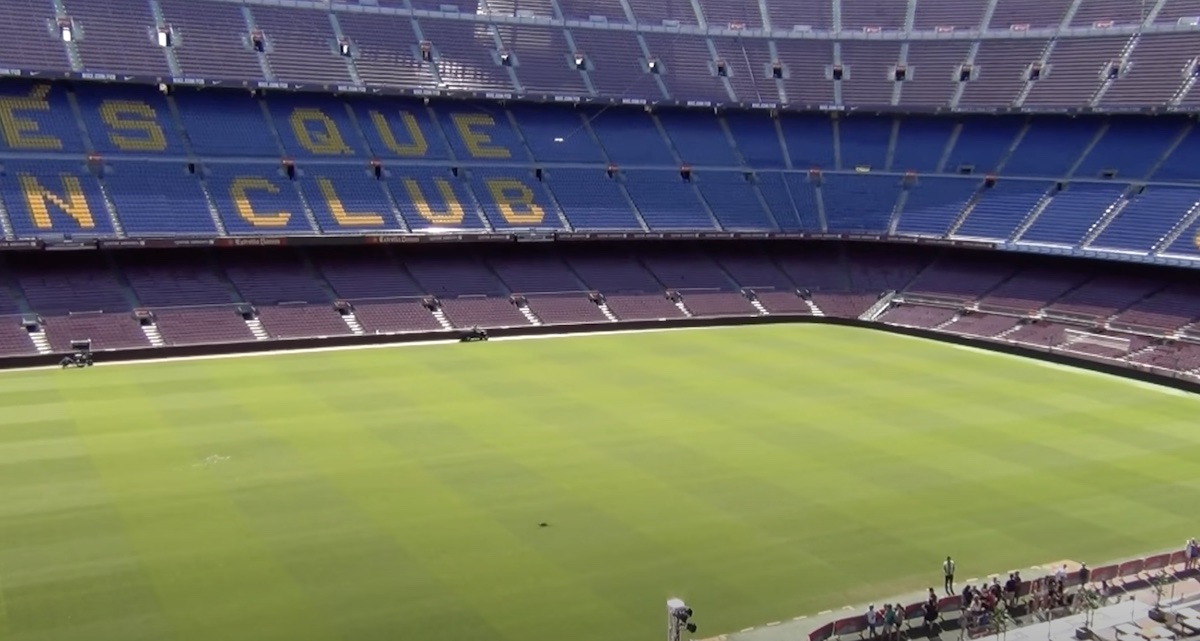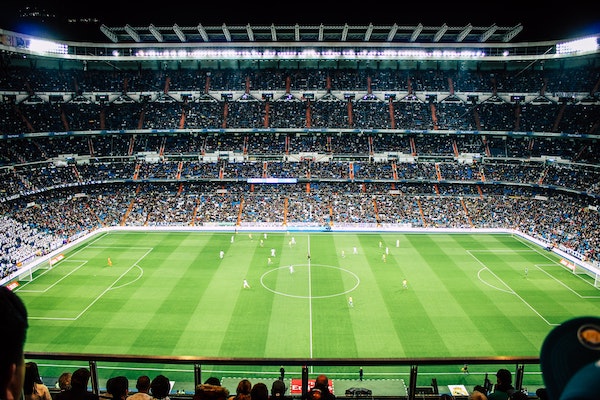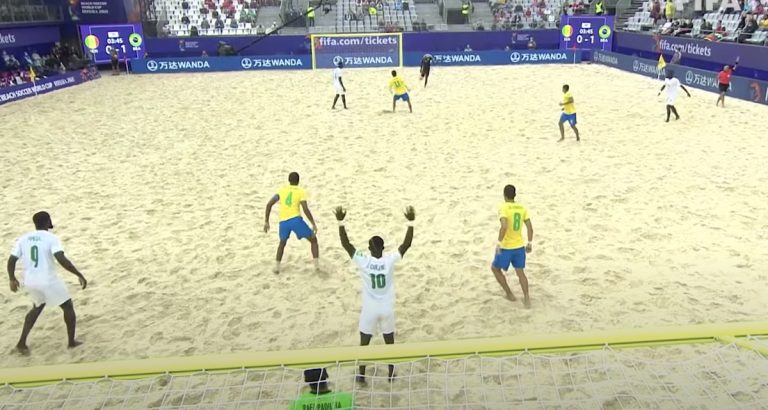Soccer Field Dimensions – How big is it?
There are many different markings on a Soccer pitch. From the complete size and width of the pitch itself, to the size of each half of the pitch, the ‘penalty’ area, and the size of the ‘six yard box/area’. More specifically, there is also the height and width of the goal posts, and the areas specified for the center circle and the corner flags.
Some of the soccer field dimensions allowed within variable dimensions others have to be exactly the same. What is common is that they are governed by the IFAB. In this article, I will explain these for you and cite some examples of how they can differ between club and country and even how they can impact the game.
Ok, probably the most common question regarding this topic is
How big is a Soccer pitch?
What is often not known is that the soccer field dimensions can be variable:
- The length or ‘touchline’ of the pitch must be within a minimum 90 meters (100 yards) and a maximum of 120 meters (130 yards).
- The width of the pitch or ‘goal line’ must be within a minimum 45m (50 yards) and a maximum 90m (100 yards).
This is why some pitches at grounds around the world are much bigger than others. For example;
Manchester City’s ‘The Etihad’ currently has the biggest pitch in the Premier League at 117 x 77 yards with a total playing area of 8932 Yards. Crystal Palace ‘Selhurst Park’ currently has the smallest pitch at 110 x 74 yards with a total playing area of 8,140 yards.
International Soccer Field Dimensions
Please note for international matches the dimensions vary
- The length or ‘touchline’ of the pitch must be within a minimum 100 meters (109 yards) and a maximum of 110 meters (120 yards)
- The width of the pitch or ‘goal line’ must be within a minimum 64m (70 yards) and a maximum 75meters or (82 yards)
Effect on play
It should be noted that this can have a significant effect on a team’s style of play. With expansive and well-funded sides such as Manchester City and their ‘sweeping’ style of soccer utilizing the full width of the pitch and using it to tire the opposition out. Similarly theirs and other sides’ with ‘flying wingers’ also utilize the biggest sized pitch their ground can allow for in order to play to their strengths.
Conversely, teams with a smaller sized pitch and lesser budget are often known for something which is known as ‘Route 1’ Soccer. This basically means that due to the smaller pitch and sometimes lesser skilled players they will bypass ‘midfield’ and launch the ball straight up front to a ‘target man’ or center forward – which does not always make for the most attractive of games!
NB this is not always the case however as some soccer stadiums (often due to the year or location they were built) are constrained by the size of the pitch the ground can physically allow.
Two notable clubs with relatively small pitch sizes by modern day Soccer are those of Liverpool ‘Anfield’ (110 x 75 yards) built in (1884) and Chelsea’s ‘Stamford Bridge’ (113 x 73 yards) built in (1904) – yet both clubs are known as ‘Giants’ of the English Premier League and known for playing quality Soccer.
Dimensions/Markings within the pitch.
There are markings within the overall pitch area however which are set by the laws of the game under Law 1 and these are rigid and identified exactly for you below.
The Goal Area
“Two lines are drawn at right angles to the goal-line, 5.5m (6yds) from the inside of each goalpost. These lines extend into the field of play for 5.5m (6yds) and are joined by a line drawn parallel with the goal-line. The area bounded by these lines and the goal-line is the goal area”.
Note the measurement of this particular area is why this is often referred to as the ‘six yard box’.
The Penalty Area
“Two lines are drawn at right angles to the goal-line, 16.5m (18yds) from the inside of each goalpost. These lines extend into the field of play for 16.5m (18yds) and are joined by a line drawn parallel with the goal-line. The area bounded by these lines and the goal-line is the penalty area”.
The Penalty Spot
“Within each penalty area, a penalty mark is made 11m (12yds) from the midpoint between the goalposts.
An arc of a circle with a radius of 9.15m (10yds) from the centre of each penalty mark is drawn outside the penalty area.
The corner area and Flagposts
“The corner area is defined by a quarter circle with a radius of 1m (1yd) from each corner flag post drawn inside the field of play.”
A flagpost, at least 1.5m (5ft) high, with a non-pointed top and a flag must be placed at each corner.
Flagposts may be placed at each end of the halfway line, at least 1m (1yd) outside the touchline.
Goal Posts
“A goal must be placed on the centre of each goal line. A goal consists of two vertical posts equidistant from the corner flag posts and joined at the top by a horizontal crossbar. The goalposts and crossbar must be made of approved material and must not be dangerous. The goalposts and crossbar of both goals must be the same shape, which must be square, rectangular, round, elliptical or a hybrid of these options”.
The distance between the inside of the posts is 7.32m (8yards) and the distance from the lower edge of the crossbar to the ground is 2.44m (8ft).
The goalposts and the crossbar must be white and have the same width and depth, which must not exceed 12cm (5ins).

Fun fact and Tricky manager tactics!
Ok, now you know the Soccer field dimensions officially. But do you know that certain managers have been known to take full advantage of this fact!
- Back in May 2000, up-and-coming Wales manager and Manchester United legend Mark Hughes let the grass grow at the Millennium Stadium, and also trimmed a few yards off the touchlines! Why? Wales were about to play Brazil! Thus, the touchlines were narrowed as he didn’t want the Brazilian wingers running riot and the grass allowed to grow in an attempt to stop Brazil;s fast passing one touch soccer!
Even shamelessly admitting as much
“I have looked up the regulations to see what the minimum width is and have asked for the pitch to be made smaller,” Hughes said. “It did look a very big pitch and with me asking the players to work hard and get about opponents all over the ground, that would make the job a little bit more difficult.”
Though it didn’t work. Brazil won 3-0 with goals from Elber, Rivaldo and Cafu!
One infamous ‘Jose Mourinho’ has also been accused of doing the same as well as having the pitch ‘watered’ (or not) to his exact specification before a match to either slow the game to a ‘crawl’ or speed it up if he feels it’s to his advantage!






